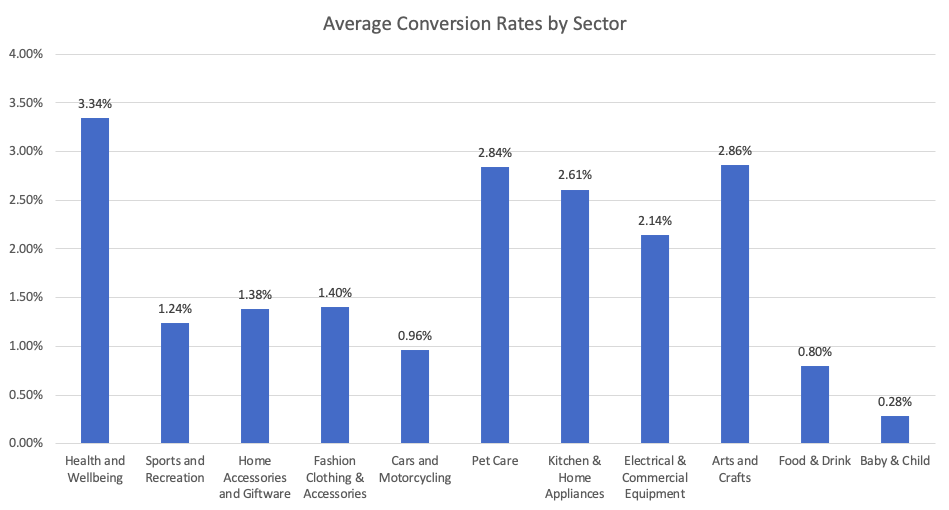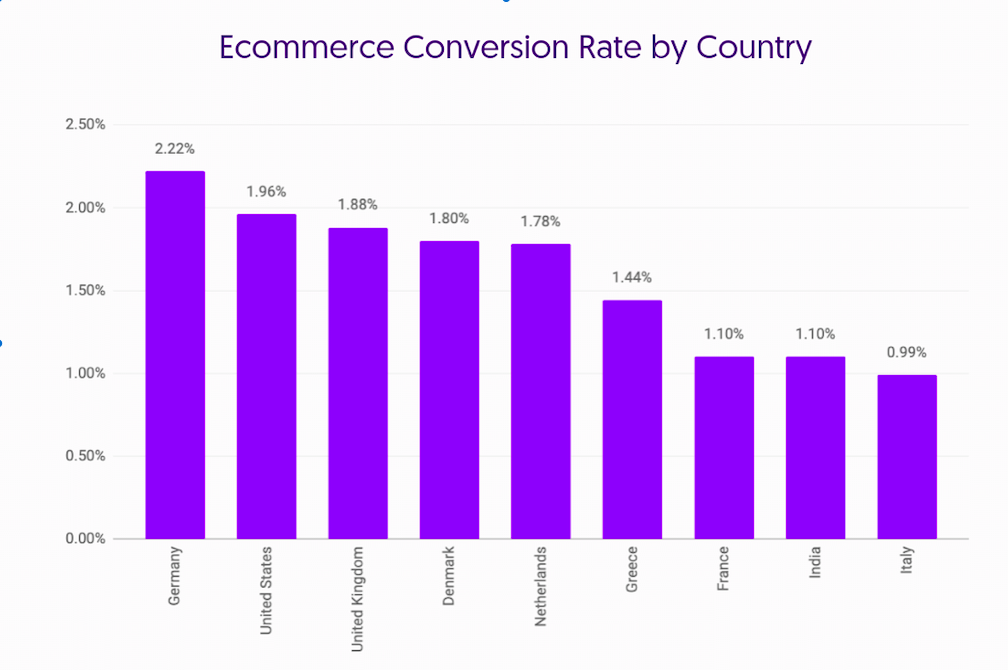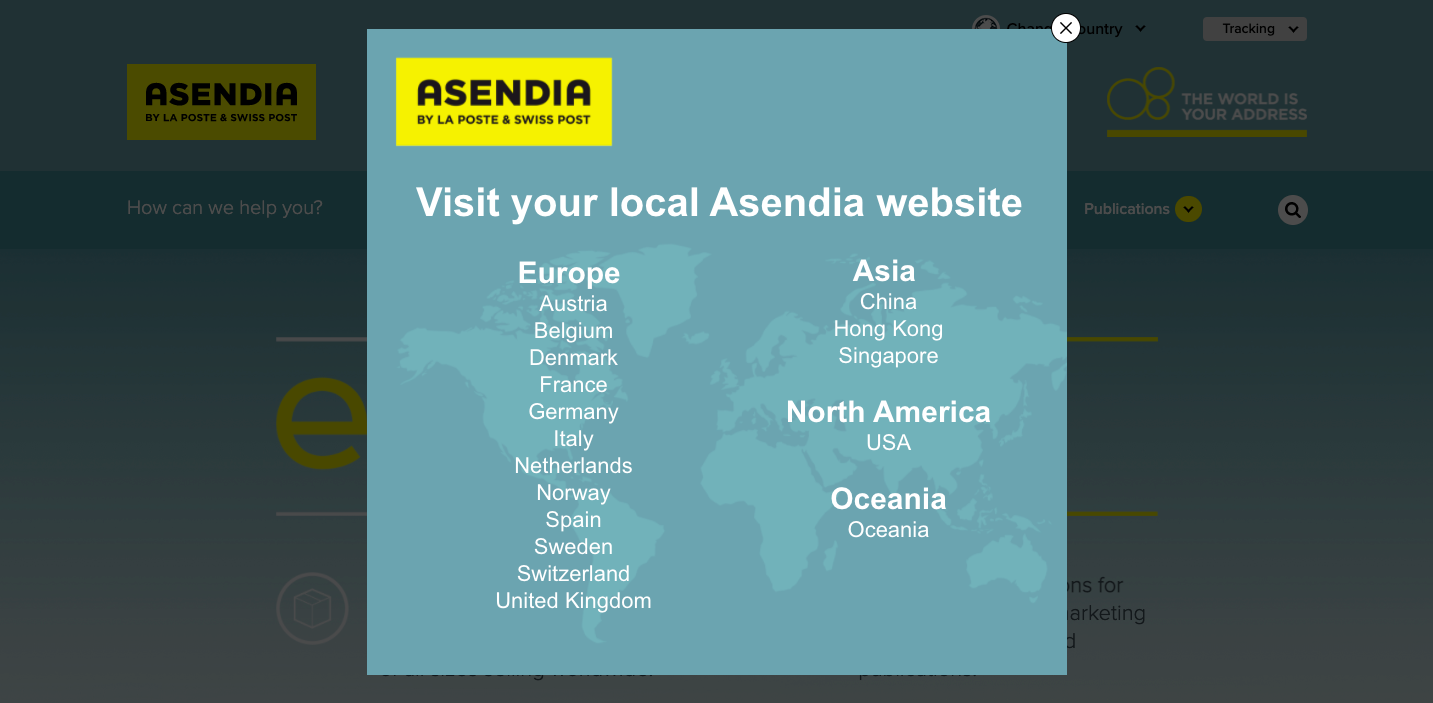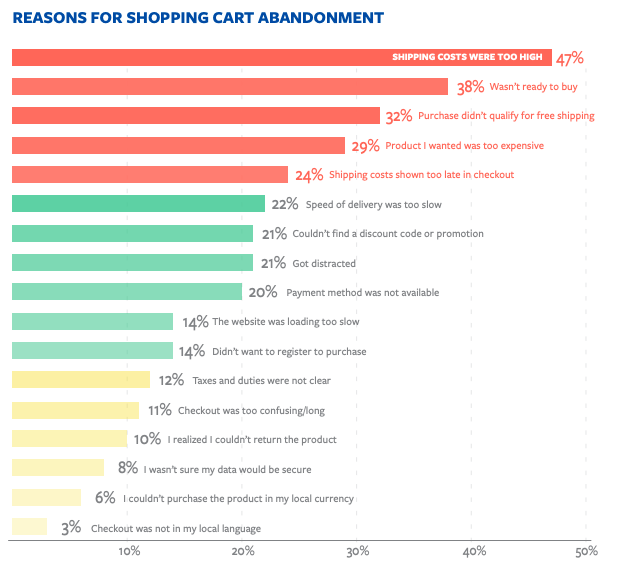Increasing your online store's international conversion rate can take your business from being a local success to a global success. To do this 'properly' will take significant investment, but get some of the fundamentals right and you can still grow sales significantly.
It’s fair to say the commerce market is booming. While there was a steady increase in people shopping online at the start of 2020, the sector has seen a massive increase due to COVID-19 lockdown restrictions closing high street shops at various times in the year.
This has led to some analysts claiming a 52% increase in online sales at the end of 2020, and it’s predicted many of these new online buyers are set to continue visiting their favourite online shop, rather than venture into town.
There are new cross-border e-commerce opportunities for small businesses as well as the large stores
What’s more, thanks to the convenience of home delivery, many online shoppers are just as happy to buy from a store thousands of miles away as they are a local ‘e-tailer’.
Research by IMRG, the UK e-commerce trade body, suggests a 17% growth on cross-border purchases between 2017-2022. It’s expected these purchases will also increase their overall share in B2C online sales too, with a 12% share in all B2C sales within the same period.
And this isn’t just happening elsewhere, in fact Britain is a key market around the world. PayPal found that 9% of Chinese consumers are actively buying UK goods regularly online, whereas 15% of German consumers are buying from British businesses too.
These impressive figures were pre-pandemic and cross-border shopping in 2020 has seen huge growth – between 20-30% depending on which report you read - despite the challenges logistics providers have faced with some borders temporarily closed and a lack of planes in the air.
In fact the challenges caused by the pandemic have actually accelerated innovation in cross-border logistics – making international purchasing even more attractive longer-term - as providers have needed to adapt and innovate to overcome hurdles and keep up with demand. This ITN/Chartered Institute of Logistics and Transport video featuring Asendia illustrates how agile international logistics companies have needed to be.
So, whether you’re an entrepreneur about to launch, a growing Shopify or Magento store, or an established British brand, how can you make the most of this boom in cross-border e-commerce?
Optimise for international conversion first, then get more traffic
Of course, you’ll need to become more visible to international shoppers, but firstly you should look to optimise your store to maximise your International Ecommerce Conversion Rate. Then you can invest in actions like SEO and paid media to drive visitors to your store, knowing you’ll get the best possible return on this investment.
What is an International E-commerce Conversion Rate and why should you care?
OK, let’s get the technical stuff out of the way first. Your E-commerce Conversion Rate (ECR) is, as defined by Google, “the ratio of transactions to sessions, expressed as a percentage”.
Simply put it’s the number of sessions (people visiting) on your website compared to the number of actual purchases. So your international ecommerce conversion rate is when you only consider store visitors from other countries.
As an example, if you have three transactions/purchases for every 100 sessions, your ecommerce conversion rate would be 3%. Monitoring this figure, helps you understand how well your online store is operating.
So how does this shape up by industry? What’s a realistic target conversion rate for your store? Looking at stats from January 2020, we can see that Health and Wellbeing have the highest conversion rate at the moment, which is naturally an impact of the coronavirus epidemic.

Source: IRP
Most of the other sectors with high Ecommerce Conversion Rates could also be attributed to recent changes in lifestyle meaning people are at home more.
But how do these figures compare country to country?

Source: ecommerce-europe.eu via growcode
These figures are indeed interesting to look at, but what does the difference between Germany and Italy’s conversion rate mean to you, and how much is your e-commerce conversion rate dependent on what matters to customers in each location?
These are questions you shouldn’t really be considering until you’ve identified your target markets based on in-depth research pertinent to your brand and product niche. You’ve got a lot of work to do! But the good news is that we know that there are some international conversion rate killers which apply to all online stores no matter the sector or country and so, these should be given your early attention.
The biggest things killing your International e-commerce Conversion Rate
Selling within your own country, relatively speaking, isn’t too difficult. You should understand what your customers need as you are a local customer too. You know what you want and what you’re looking for so you will, hopefully, be reflecting this with your own business.
But what if you’re cross-border selling? Do you really know what someone in France is looking for? How about the delivery logistics in the Middle East? And does any of it matter when you’re working on international conversion rate optimisation?
Whether you are just thinking about selling overseas – or expanding on existing sales - you need to start considering how local cultures, habits and expectations will make a massive difference to the growth of your business.
![]() Speaking the customer’s language is fundamental to optimising your international conversion rate
Speaking the customer’s language is fundamental to optimising your international conversion rate
It seems obvious but anyone not able to read your website will be heading back to another online store within seconds. If you’re an English-speaking business then having your website professionally translated to support sales across the world is optimal, but this can be expensive. So, you could consider plugins (which are improving at a pace) that will translate your pages or localised websites to the user’s local language.
Presenting the right store to your user can also be easily solved with a redirect option allowing customers to choose a store based on their browser language or IP address.
But make sure this is done via a pop-up that confirms if your customers want to change their store as doing this automatically is considering ‘geo-blocking’ and is banned in some locations.
A simple pop-up will help customers decide which website is local for them.

![]() Localised currency and payment options reduce checkout abandonment significantly
Localised currency and payment options reduce checkout abandonment significantly
Having the option to pay for your products in a local currency is a massive benefit, and there are plenty of options out there to work out exchange rates for you on your store in real time.
Yes, selling your product in Rupees when you purchased everything in Sterling does sound daunting, and it’s no wonder many smaller businesses avoid this, but it’s the 21st century and selling in multiple currencies is simple, seamless and scalable.
When it comes to payment options, it’s easy to believe that the whole world uses Visa, Mastercard, PayPal and Apple Pay, but that’s not the case.
There are hundreds of payment types around the world, and if you offer your international customers those that are familiar to them it can reduce friction in your international checkout process significantly.
It’s not difficult either with many solutions available as Apps for the leading e-commerce platforms like Shopify, Magento and BigCommerce.
![]() Delivery experience is pivotal to optimising your online store for international shoppers
Delivery experience is pivotal to optimising your online store for international shoppers
This is a big one. Your shopper is on your website, you’re speaking to them in their language and they can pay in their local currency with their preferred method, they’re about to fill in their address and check the delivery details and they abandon their cart! What happened? It was going so well. (It’s easy enough to check your store’s analytics to see if this is happening to you).
How you get your products to your customer is possibly the biggest factor in making sure your international conversion rate is as high as it can be, and that shoppers keep coming back for more.
If it’s going to cost too much, take too long, or not be delivered in a way the customer would like, they will go back to Google and head to a competitor.
We’ve all got stories of terrible delivery experiences and we’re sure you don’t want your customers referencing your company when telling their friends, the struggles they faced when getting their new purchase into their hands.
But don’t just take our word for it. E-commerce platform Flow found that high shipping costs were the reason for 47% of customers abandoning their cart, with 32% saying lack of free shipping was a reason.
In fact, high shipping costs were mentioned in 9 out of the 11 countries surveyed as the number one reason for shopping cart abandonment.
Interestingly, China and South Korea did not seem to be bothered by high shipping costs, but that’s likely down to them accepting that ordering things from across the world is going to cost more than a local purchase.

Source: Flow.IO
Delivery factors are three of the top five reasons for cart abandonment.
![]() How can a delivery process make your international customer happy?
How can a delivery process make your international customer happy?
So, what’s needed and how can you be sure your customer is happy – or at least not unhappy! - when once you’ve shipped the order a lot of it is out of your hands.
Firstly, be up front with your international customers about delivery times and costs. Yes, slow orders and costs may turn some customers off but if these are unavoidable (in reaching customers in some destinations) being honest will at least manage expectations.
Hidden costs are also a factor. With Brexit now in place, UK businesses are going to have to think about customs charges when sending to customers in the EU as well as elsewhere. Be upfront if customs charges are expected, and if these are included in the price.
The topic of customs is vast, so make sure you do your research, and work with a delivery partner that can guide you through the processes, make sure customs charges are as low as possible, and your parcels get through customs without delay.
Delivery time is also a big thing to consider when deciding your delivery partner. But remember that a shopper’s delivery speed requirements will vary from one purchase to the next. They may be happy to pay extra for the quick delivery of a dress needed for an upcoming Zoom event, but might wait longer and pay less for a non-urgent purchase. So if possible offer a choice of shipping options.
Companies like Asendia not only have the size to get your package from Tilbury to Timbuktu, but they use local experts at each end.
You’ll have the peace of mind knowing that when it’s landed in the destination country, passed through customs and is packed onto a local van, the driver knows where he’s going and knows how best to get that package into the hands of your customer, days after it left your own.
And for the shopper you can include within your Delivery Page that Asendia is transporting your parcels to the shopper’s country and which familiar final-mile parcel company is bringing it to their door. We all have our favoured local delivery company and seeing they will be involved gives confidence in making the purchase.
Trust in your International parcel service is vitally important and connected to optimising your international conversion rate in more ways than you may originally have considered.
You need to know that companies like Asendia are giving you the best quality of service at the best price, because if your delivery fails then that review on Trustpilot or social media will simply be talking about how you failed to get the item to your customer and that will turn other customers away before they’ve even had a real look at what you offer.
![]() 67% of shoppers check a store’s Returns process before making a purchase
67% of shoppers check a store’s Returns process before making a purchase
Delivery is not the end of it. Your customer will also want to know what your returns process is, just in case what they’ve purchased isn’t right for them.
Invesp found a massive 67% of shoppers will check a business’s return process before making a purchase. Before you have even made a sale, you need to consider how your customer might send something back. It sounds backwards but it will make all the difference.
The rise in e-commerce has called into question a lot of unsavoury returns processes. Stories of businesses based in other parts of the world, telling customers that they’ll only get a refund if they send the return by recorded delivery, pointing out this will negate the refund, are commonplace. So much so, it’s refreshing to see when a business has a well-defined and reasonable returns process.
Being able to send a product back, for whatever reason, goes a very long way to helping your customers complete their purchase.
So what options are consumers looking for. Well, shoppers in eight out of the 11 markets surveyed by Flow, mostly opposed the idea of paying for returns. An average of 71% of all surveyed consumers stating they’re not willing to pay for returns.
So, you’ll need to factor this in when choosing your delivery partner. Not only should they have an International fulfilment centre for sending items out, but they also need to help provide an International returns service to get things back if necessary.
They also need to help support you with easy to print off return labels and if the package can be picked up from the customer directly or nearby, that will all go a long way to helping a customer not only buy once but come back again and again.
Summary: International conversion rate optimisation in a nutshell
Localise is the key take-away here. While your physical base may be in a nice quiet suburb of a UK city, when online, you should be a local shop in any city or sleepy town in any country around the world.
Your products might be highly sought after but unless your global visitors feel welcome and their needs are being met, they’ll abandon your cart or bounce off of your website after a few clicks, and that’s going to keep your international e-commerce conversion rate low.
You’ll need to speak their language, accept their currency, be honest about delivery costs, times and customs charges, be upfront about returns and most of all understand how your package will be delivered to your customer how and when they want.
There is plenty of support from the likes eshopworld, Shopify, Magento, and Big Commerce to help localise your online shop and payment options.
To find out more about how Asendia can support you in optimising and localising your customer’s delivery experience, get in touch and speak to a member of the team.






